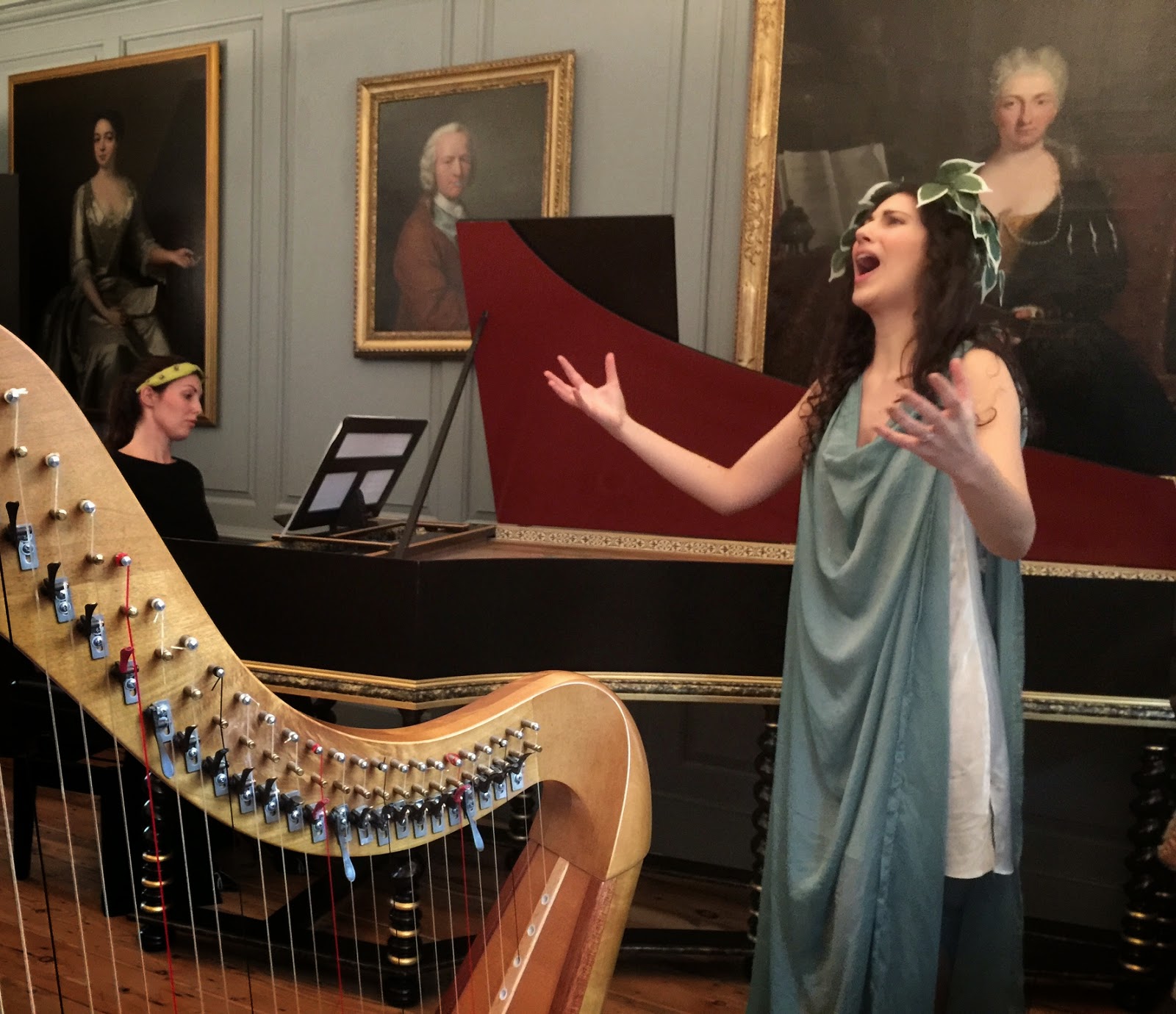So (deep breath…), working backwards, here’s 2015 in a nutshell:
Last Thursday I joined forces with Handel House Talent – who have also been artists in residence at HH this past year – for the premiere of Villanelle. This was the principal commission of my year-long residency, and had its premiere at St George’s, Hanover Square.
Together with librettist and collaborator Edward Allen, I explored in Villanelle an aspect of Handel’s compositional process that has intrigued me throughout my residency: the composer’s occasional tendency to break up his music with small phrases or units of music – often borrowed from other sources – inserted into the music, and later smoothed over. Throughout Villanelle strands of material (whose origins often stretch beyond the confines of the piece) are passed between three spatially-separated ensembles, whilst the mezzo-soprano’s vocal line weaves in and out, providing a more continuous and seamless surface.
The work is scored for the players of this year’s HHT (two recorders, chamber organ, harpsichord, baroque cello, mezzo - with the addition of electronics), and it was such a massive privilege to work with such expert players, and such an idiosyncratic line-up!
You can view Edward’s original words here and listen to the piece below, with some beautiful performances from Handel House Talent, conducted by William Cole.
Villanelle
* * *
For 10 days in November, Handel House was overflowing with new music, with the annual CiR-curated series (four concerts of new music), as well as an installation work I’d written, which ran each day in Handel’s bedroom.
As I’ve spilt a fair bit of ink on the installation already on this blog, I shan’t bore you with too many more details! But for those who didn’t have a chance to pop in and catch the piece while it ran, I include below a small snippet of the work - one strand of possible material, based on Scarlatti.
(A big thanks to the following musicians who made this all possible: Flute:Taylor Maclennan, Accordion: Bartosz Glowacki, Violin & Viola: Clarice Rarity, Cello: Jamal Aliyev, Double Bass: Nina Harries, Soprano: Josephine Stephenson).
Installation Work [Read more about the ideas here]
* * *
Running concurrently in November was the CiR Curated Series – for which I welcomed friends old and new to Handel House to present four concerts, responding to both the historicism of the house, and the museum’s commitment to new music (with concerts involving new commissions written especially for the series).
 It was my intention to build a community of new music with this series – and it was such a pleasure to share these intimate gigs in Handel’s music room with the audience and musicians. A huge thank you to the performers who joined us – Tre Voci, The Hermes Experiment, rarescale and explorensemble – and to the featured composers for their offerings.
It was my intention to build a community of new music with this series – and it was such a pleasure to share these intimate gigs in Handel’s music room with the audience and musicians. A huge thank you to the performers who joined us – Tre Voci, The Hermes Experiment, rarescale and explorensemble – and to the featured composers for their offerings.Please do check out the new works, included below, by Elis Czerniak, Oliver Christophe Leith and myself.
Elis Czerniak: Baruopa, written for The Hermes Experiment. Given its premiere at Handel House on 22nd November 2015.
Oliver Christophe Leith: Blue-sky Sprites for explorensemble. Given its premiere at Handel House on 29th November 2015
Edwin Hillier: Yett II for Tre Voci. Given its premiere at Handel House on 19th November 2015
* * *
The first part of my residency – as often shared on this blog – was principally devoted to education work, spending much of the the year leading workshops both at HH and in schools dotted around London. I’ve had so many fantastic experiences of these sessions, and have met so many talented young people, who’ve embraced Handel’s music and been spurred on to start creating their own.
 Particular highlights have included the RNIB [Royal National Institute of Blind People] Summer School back in July, when I was fortunate to lead young composers in the creation of new pieces of music, performed once more by members of the wonderful Handel House Talent, as well as the piloting of the new Baroque Central programme.
Particular highlights have included the RNIB [Royal National Institute of Blind People] Summer School back in July, when I was fortunate to lead young composers in the creation of new pieces of music, performed once more by members of the wonderful Handel House Talent, as well as the piloting of the new Baroque Central programme.And it’s on the education side of things that I wish to sign off my final blog post (and fitting too, as I look forward to carrying on my relationship with HH into the new year on a number of projects as freelance workshop leader and composer). Back in June, I spent a few weeks in residence at the Ursuline Academy in Ilford, leading a Year 10 class in the devising, composition and performance of a brand new opera, based upon Handel’s Giove in Argo.
The education part of the residency is so vital and this project such a highlight that it seems like a nice point to wrap things up… So do take a peek!
* * *
I hope not to be a stranger for long! You’ll catch me back at HH on 7th April, when the wonderful Trio Aporia will be performing a new work of mine… http://handelhendrix.org/whats-on/events/pieces-en-concert/
As for now, you can keep in touch at www.edwinhillier.com. And I’d like to say a huge thank you to the staff at Handel & Hendrix for their support over the past 15 months… It’s been a blast!















.JPG)

























